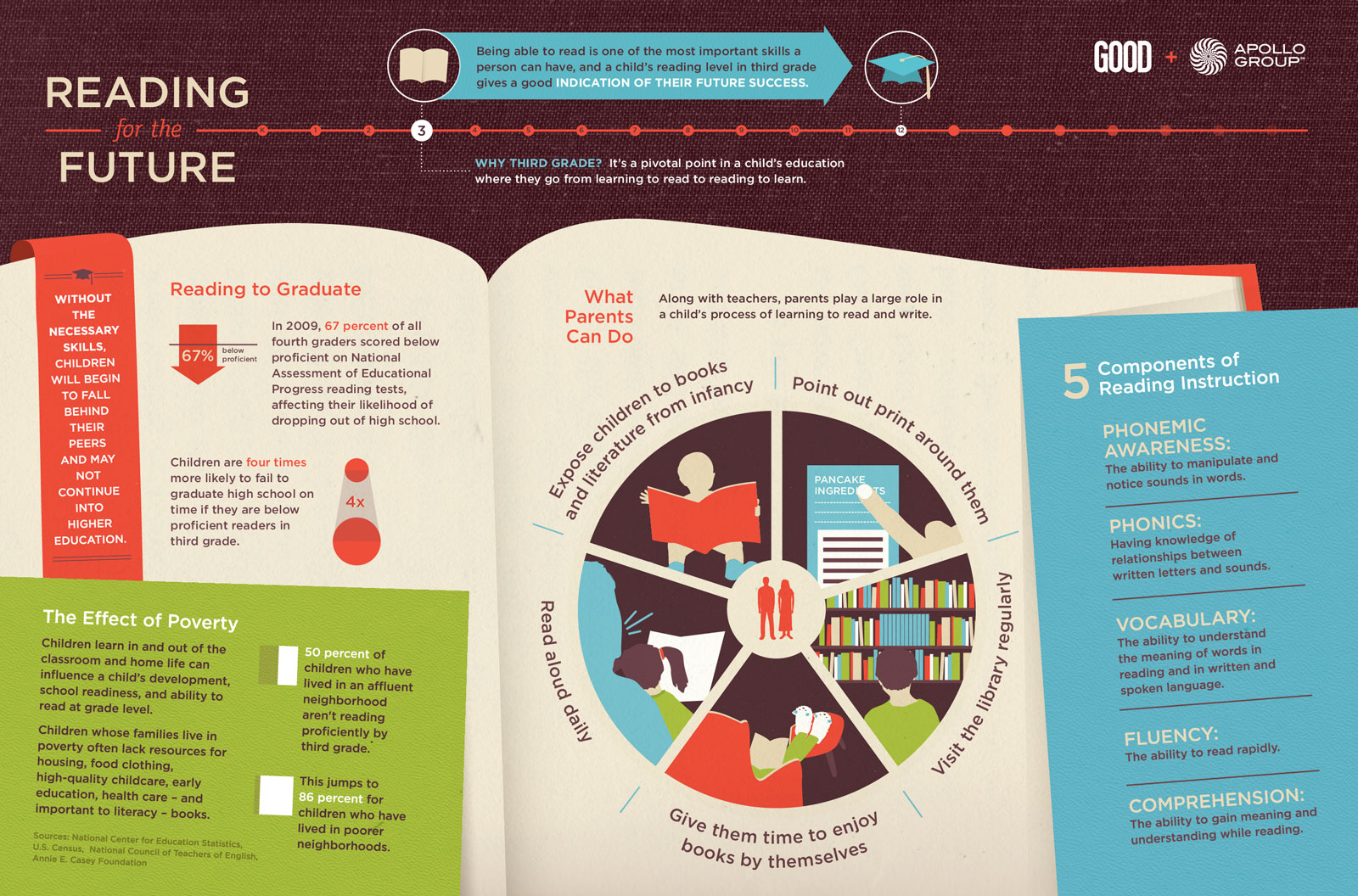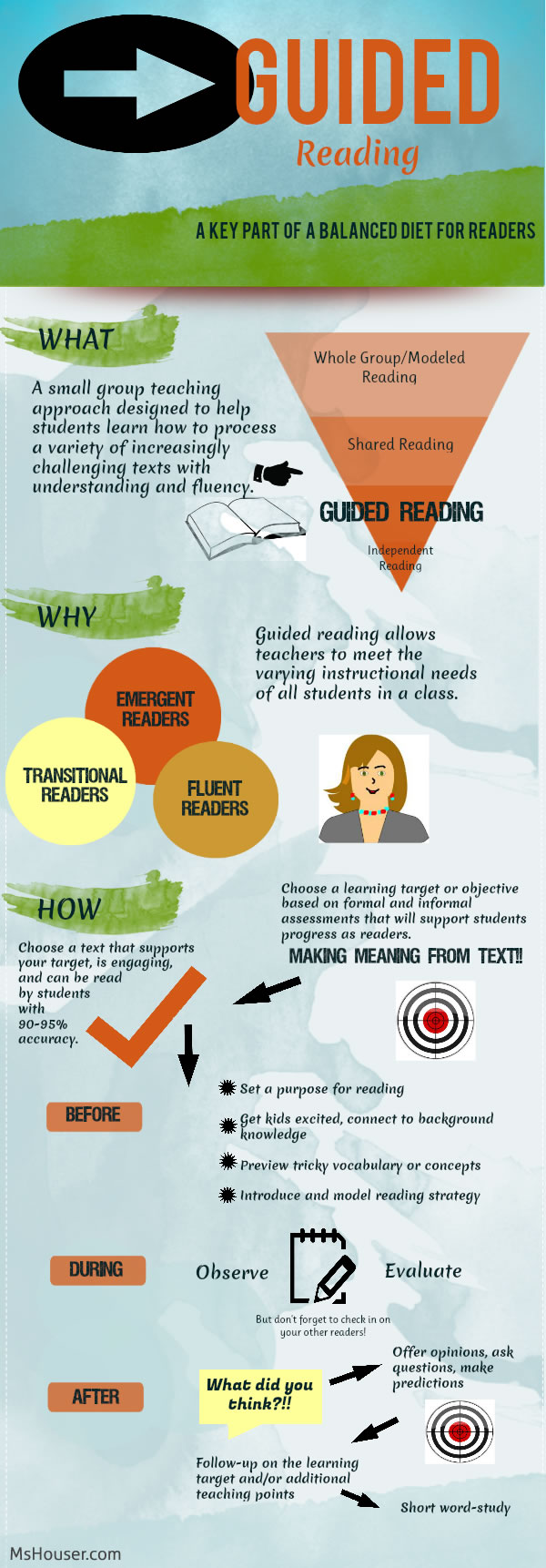How Do I Teach My Child to Read?

Children learn to read through consistent exposure to various kinds of literature, as well as by engaging in different types of reading strategies like those outlined above. Image source: infographicsmania.com
Reading is a critical component of communication, and age 7 seems to be the magical turning point by which most children learn to read. Children who struggle up until this point – and those who still aren’t reading beyond 7 years of age, don’t necessarily have disabilities that are preventing them from acquiring literacy skills. However, it is valuable for parents to acknowledge the typical milestones for literacy and recognize the warning signs that something more serious than just a delay is preventing their children from reaching reading milestones. If you find yourself asking: How do I teach my child to read?, these following strategies are might give your child the support and extra attention to literacy that is needed.
When Should My Child Be Reading?
Children all follow their own drummers, but there are general guidelines for many academic, social, and other developmental milestones, including literacy. Reading Rockets, an initiative to promote literacy, has compiled the following milestones for children and reading:
Literacy Milestones for Ages 3-4 (from Reading Rockets)
- Enjoy listening to and talking about storybooks
- Understand that print carries a message
- Make attempts to read and write
- Identify familiar signs and labels
- Participate in rhyming games
- Identify some letters and make some letter-sound matches
- Use known letters (or their best attempt to write the letters) to represent written language especially for meaningful words like their names or phrases such as “I love you”
Literacy Milestones by Age 5 (from Reading Rockets)
- Sound like they are reading when pretending to read
- Enjoy being read to and retell simple stories
- Use descriptive language to explain or to ask questions
- Recognize letters and letter-sound matches
- Show familiarity with rhyming and beginning sounds
- Understand that print is read left-to-right and top-to-bottom
- Begin to match spoken words with written ones
- Begin to write letters of the alphabet and some words they use and hear often
- Begin to write stories with some readable parts
For parents concerned with their children’s reading skills, there are several strategies and methods that can help children build reading abilities that will be parts of their entire communication skill-sets.

The method of Guided Reading as described here can help some emerging readers become more confident and capable. Image source: www.mshouser.com
How Do I Teach My Child to Read?
Have your child receive a thorough evaluation by his or her pediatrician and other specialists as warranted. Common things such as sight deficiencies, ear infections, and plain-old “just not ready” might all be the culprits. Other times conditions such as ADHD, hearing loss, speech disorders, dyslexia, or dysgraphia can be responsible. Knowing if these underlying contributing causes exist can help determine a specific course of reading intervention.
Consider tutorial supplements such as Teach Your Child to Read in 100 Easy Lessons, by Siegfried Engelmann, Phyllis Haddox, and Elaine Bruner. After having early readers and then children who seemed uninterested in the entire process, I turned to this resource (and admit that I first I had my doubts). It does away with conventional ideas of capitalization and punctuation – at first – and solely focuses on the sounds letters make. It is best, though, to use this program with children who really aren’t reading much at all (ages 3-6) because it feels somewhat like a step backwards, and a little bit sideways, to use this program with children who are reading some basic words but not yet sentences.

This program isn’t the typical approach to teaching reading, but it has proven effects, especially for struggling learners. Image source: naturalmommie.com
Have your child make a book instead of read one. There are free and easy templates to use like these, or you can create your own entirely. We took 3-ring binders and to them added our own pages, one for each letter of the alphabet, and then scoured magazines and even clip art for pictures that started with that letter. We also moved on to sounds – such as /sh/ and /ch/ and looked for pictures that represented those as first sounds.
More Ideas to Get Your Child Reading
- Use some motivation or incentives. Some children just don’t enjoy reading – at least not yet. Use motivation charts or build a paper link chain. My son delighted in making a paper chain that decorated his bunk bed with the name of one book he read on each strip of paper.
- Use books on CD to supplement literacy time – many libraries let you check them out for a few weeks at a time and the audio books are perfect for car rides or for kids to listen to while playing their rooms.
- Read to your child.
- Play reading-based games (i.e. Scrabble Jr.).
- Use predictable and basic books such as the Cat and Rat series or books like these Usborne ones where you share the story with your child reading a certain set of easier words that cleverly add to the storyline.
Not all children will learn to read at the same pace, or as in my house, love to read with the same passion or about the same things as those around each other. However, parents can use these literacy guidelines to remain aware of their children’s progress – and then be able to act and use other strategies when reading becomes a struggle.


